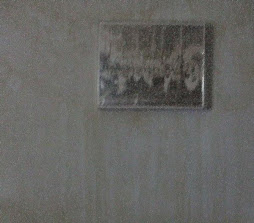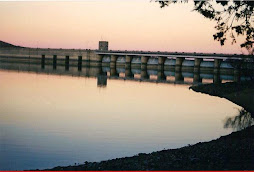Special report: Japan's "throwaway" nuclear workers Reuters. Excerpts:
A decade and a half before it blew apart in a hydrogen blast that punctuated the worst nuclear accident since Chernobyl, the No. 3 reactor at the Fukushima nuclear power plant was the scene of an earlier safety crisis. Then, as now, a small army of transient workers was put to work to try to stem the damage at the oldest nuclear reactor run by Japan's largest utility.
At the time, workers were racing to finish an unprecedented repair to address a dangerous defect: cracks in the drum-like steel assembly known as the "shroud" surrounding the radioactive core of the reactor.
But in 1997, the effort to save the 21-year-old reactor from being scrapped at a large loss to its operator, Tokyo Electric, also included a quiet effort to skirt Japan's safety rules: foreign workers were brought in for the most dangerous jobs, a manager of the project said.
"It's not well known, but I know what happened," Kazunori Fujii, who managed part of the shroud replacement in 1997, told Reuters. "What we did would not have been allowed under Japanese safety standards."
Aww shit: Radioactive water leaks from Japan's damaged plant Reuters: Excerpts:
About 15 metric tons of water with a low level of radiation (How much radiation? "A. Low. Level.")leaked from a storage tank at the plant on the Pacific coast, the Nuclear and Industrial Safety Agency said.
Plant operator Tokyo Electric Power Co (Tepco) said it was investigating the cause of the leak which was later repaired. (Feel better now?)
Vast amounts of water contaminated with varying levels of radiation have accumulated in storage tanks at the plant after being used to cool reactors damaged when their original cooling systems were knocked out by the March 11 disaster.
Dealing with that radioactive water has been a major problem for Tepco..
#Fukushima I Nuke Plant: New and Improved Reactor Cooling System Using Treated Water Shuts Down After 1.5 Hour of Operation From Ex-SKF, via Rense.
Yes, yes it is a big system, which should have been carefully prepared and tested for at least one or two years and they did it in 2 months.
A leak was found on a joint of PVC pipes that transport the treated water.In earlier Yomiuri article, 4 kilometer long PVC pipes feed the treated water to the reactors, and TEPCO people were worried about the leak all along.
I guess they were too preoccupied with Kurion's zeolite vessels (which require frequent change and system downtime) and didn't have time to test the 4 kilometer long network of PVC pipes.
#Radiation in Japan: Government Wants to Offer Japan's Seafood to Developing Nations Ex-SKF.
As part of the ODA (Official Development Assistance) under the Ministry of Foreign Affairs, a host of aid programs for developing nations around the world, the Japanese national government is going to buy up processed seafood [canned fish, for example?] from the earthquake-affected areas and offered them to developing nations.
And:
Please keep in mind that this is what the national government (and probably the prefectural governments in Tohoku) wants, and not the fishermen themselves. I'm sure some fishermen will be all for it, but others won't be, as I've read about them who simply stopped fishing when they become aware that the fish were contaminated with radioactive materials.
Boric acid being added to No.3 reactor fuel pool Video/Article courtesy of NHKa via Rense. Excerpts:
Tokyo Electric Power Company has begun adding boric acid to the spent fuel storage pool of the No.3 reactor at its Fukushima Daiichi nuclear plant to prevent fuel racks from being corroded by alkaline water.
..
Last month, TEPCO found that the water in the pool had turned strongly alkaline, with its PH level reaching 11.2. The leaching of calcium hydrate from the debris is believed to be the cause.
I'm guessing that if more people were involved in the Fukushima cleanup operation, this project would have started last month sometime. It really is amazing(in the worst sort of way) that so few people, no matter their level of dedication, are charged with such a large, life-in-the-balance task, don't you think? Our collective personal, environmental, and planetary health and safety rests in the hands of less than 2000 people, working day and night, with no guarantee of success. To reiterate, there are no guarantees of success, and global catastrophe waits behind the Other Door..
A decade and a half before it blew apart in a hydrogen blast that punctuated the worst nuclear accident since Chernobyl, the No. 3 reactor at the Fukushima nuclear power plant was the scene of an earlier safety crisis. Then, as now, a small army of transient workers was put to work to try to stem the damage at the oldest nuclear reactor run by Japan's largest utility.
At the time, workers were racing to finish an unprecedented repair to address a dangerous defect: cracks in the drum-like steel assembly known as the "shroud" surrounding the radioactive core of the reactor.
But in 1997, the effort to save the 21-year-old reactor from being scrapped at a large loss to its operator, Tokyo Electric, also included a quiet effort to skirt Japan's safety rules: foreign workers were brought in for the most dangerous jobs, a manager of the project said.
"It's not well known, but I know what happened," Kazunori Fujii, who managed part of the shroud replacement in 1997, told Reuters. "What we did would not have been allowed under Japanese safety standards."
Aww shit: Radioactive water leaks from Japan's damaged plant Reuters: Excerpts:
About 15 metric tons of water with a low level of radiation (How much radiation? "A. Low. Level.")leaked from a storage tank at the plant on the Pacific coast, the Nuclear and Industrial Safety Agency said.
Plant operator Tokyo Electric Power Co (Tepco) said it was investigating the cause of the leak which was later repaired. (Feel better now?)
Vast amounts of water contaminated with varying levels of radiation have accumulated in storage tanks at the plant after being used to cool reactors damaged when their original cooling systems were knocked out by the March 11 disaster.
Dealing with that radioactive water has been a major problem for Tepco..
#Fukushima I Nuke Plant: New and Improved Reactor Cooling System Using Treated Water Shuts Down After 1.5 Hour of Operation From Ex-SKF, via Rense.
Yes, yes it is a big system, which should have been carefully prepared and tested for at least one or two years and they did it in 2 months.
A leak was found on a joint of PVC pipes that transport the treated water.In earlier Yomiuri article, 4 kilometer long PVC pipes feed the treated water to the reactors, and TEPCO people were worried about the leak all along.
I guess they were too preoccupied with Kurion's zeolite vessels (which require frequent change and system downtime) and didn't have time to test the 4 kilometer long network of PVC pipes.
#Radiation in Japan: Government Wants to Offer Japan's Seafood to Developing Nations Ex-SKF.
As part of the ODA (Official Development Assistance) under the Ministry of Foreign Affairs, a host of aid programs for developing nations around the world, the Japanese national government is going to buy up processed seafood [canned fish, for example?] from the earthquake-affected areas and offered them to developing nations.
And:
Please keep in mind that this is what the national government (and probably the prefectural governments in Tohoku) wants, and not the fishermen themselves. I'm sure some fishermen will be all for it, but others won't be, as I've read about them who simply stopped fishing when they become aware that the fish were contaminated with radioactive materials.
Boric acid being added to No.3 reactor fuel pool Video/Article courtesy of NHKa via Rense. Excerpts:
Tokyo Electric Power Company has begun adding boric acid to the spent fuel storage pool of the No.3 reactor at its Fukushima Daiichi nuclear plant to prevent fuel racks from being corroded by alkaline water.
..
Last month, TEPCO found that the water in the pool had turned strongly alkaline, with its PH level reaching 11.2. The leaching of calcium hydrate from the debris is believed to be the cause.
I'm guessing that if more people were involved in the Fukushima cleanup operation, this project would have started last month sometime. It really is amazing(in the worst sort of way) that so few people, no matter their level of dedication, are charged with such a large, life-in-the-balance task, don't you think? Our collective personal, environmental, and planetary health and safety rests in the hands of less than 2000 people, working day and night, with no guarantee of success. To reiterate, there are no guarantees of success, and global catastrophe waits behind the Other Door..









































































































No comments:
Post a Comment